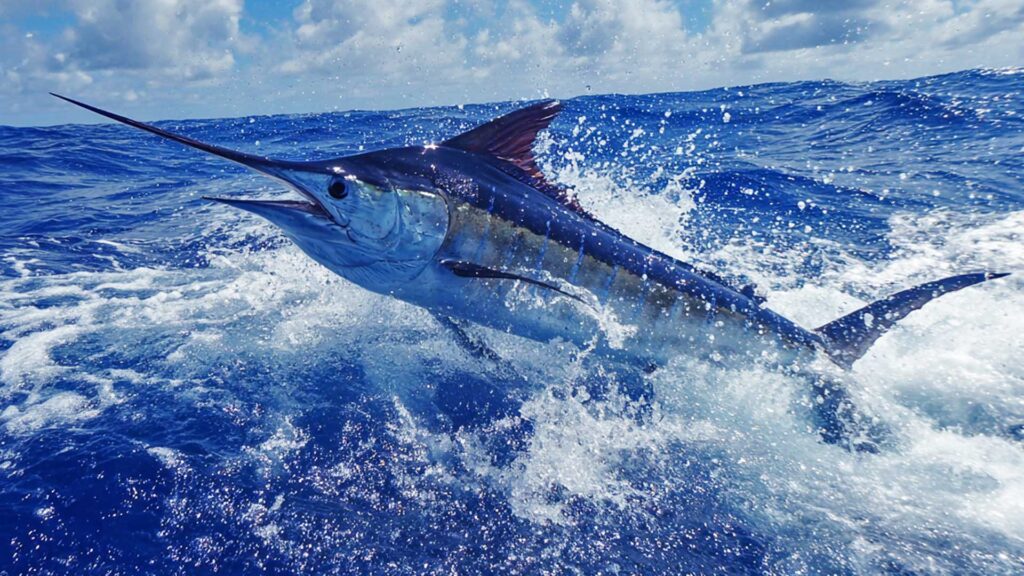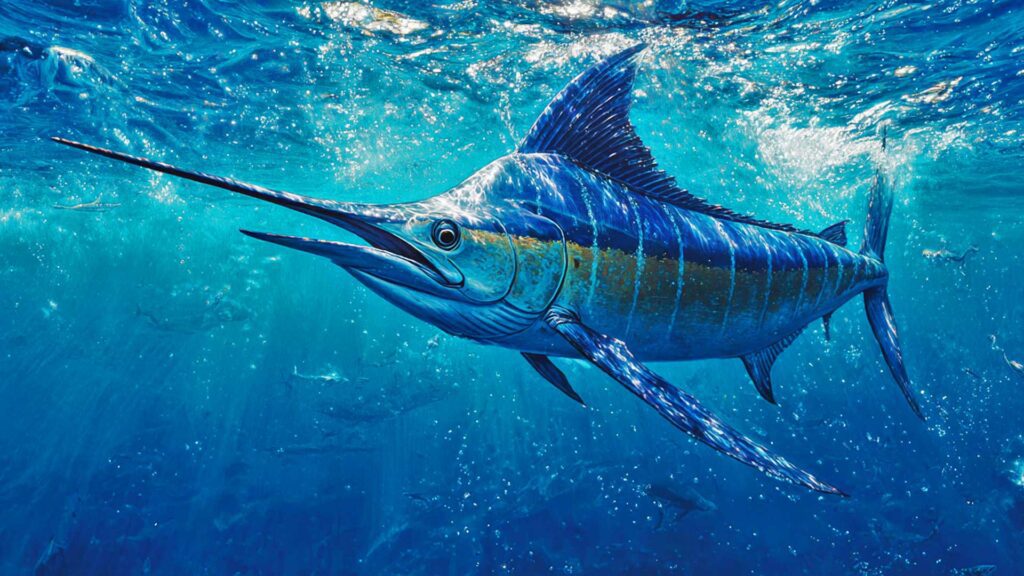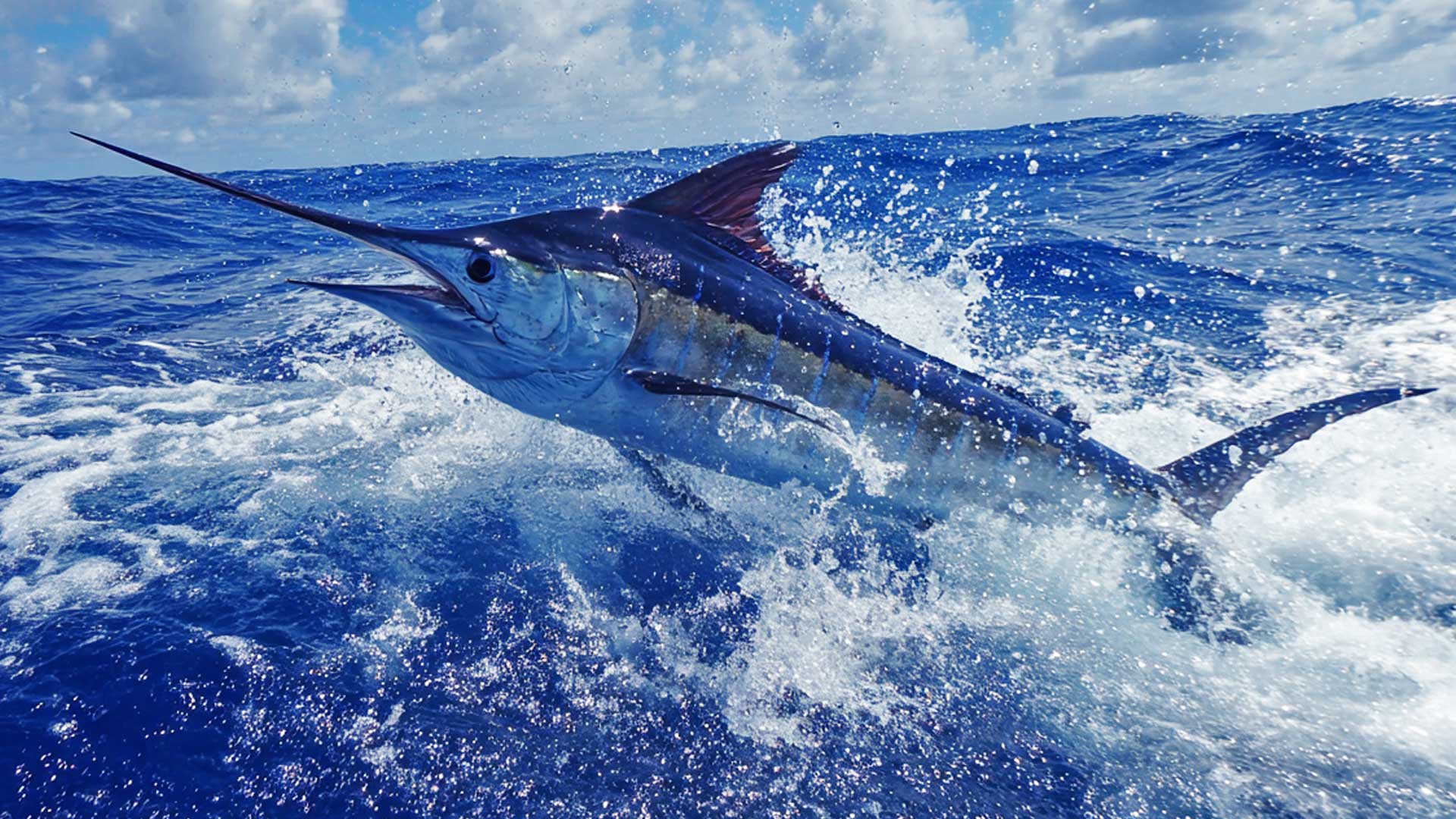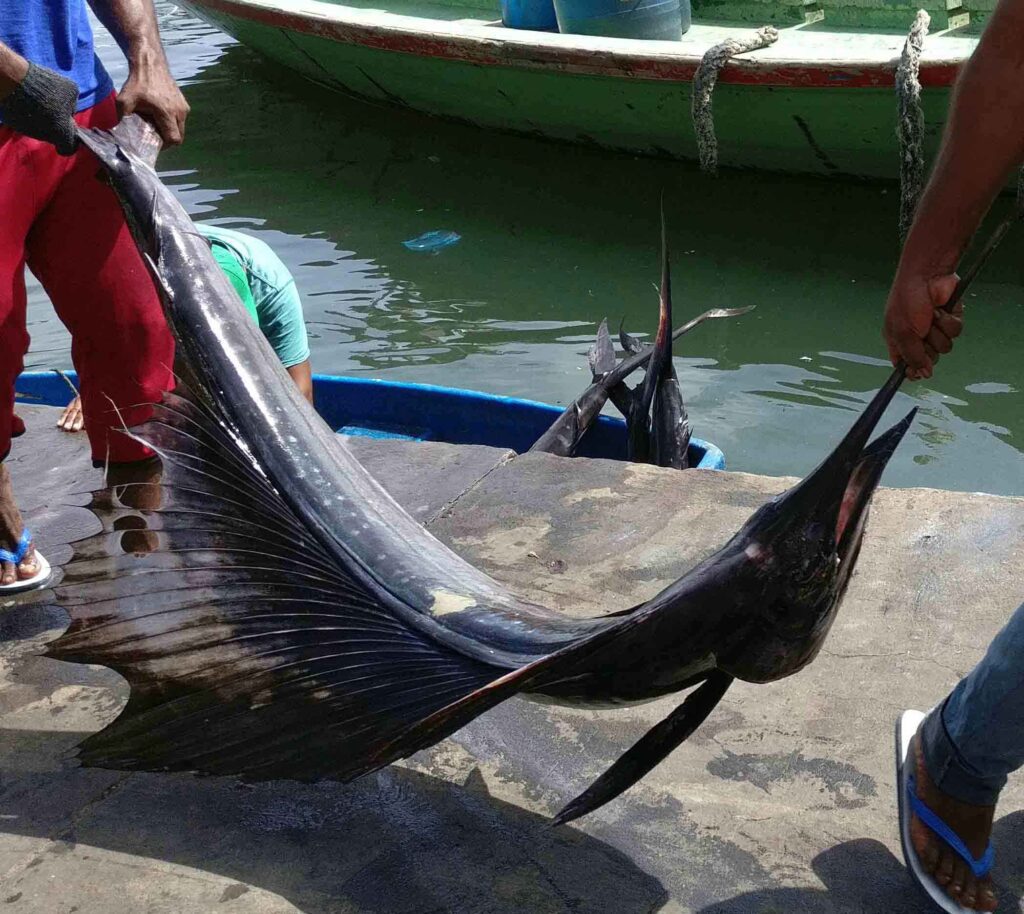
To hook a fish of the size three times your height and weighing more than 300 kg is a brutish battle and deadly encounter one can experience in a lifetime. As a fishing enthusiast, I researched many species of fish and found the swordfish among the fiercest predators that roam in the deep ocean.
In Maldives, this predator is known as Thungadu hibaru or Kanneli hibaru. Lane fishing method and trolling lures were used to catch swordfish (Xiphias gladius) in the Maldives. In the 1980s, sword fish accounted for 80 percent of all billfish caught in the Maldives (Anderson, 1997).
To write this chronicle, I called Ahmaadhbe, my favorite fisherman. I asked him how they targeted these monsters. “We use 1000 lb monofilament and a big hook. And we rig a live fish or whole fish,” he explained to me. This was the weapon used those days to land these brutes, although now an arsenal of high-end fishing gear is used to catch this mighty fish. The sea of our island, Fuvahmulah, is one of the deepest in the Maldives. Fishermen had to sink the bait deep down to target this predator.

I was not surprised to hear his simple explanation and method when compared to the complex gears that we use nowadays to target these fish. We should accept the fact that in ancient times, people used simple techniques to do complex things. From intricate curving to building complex structures and inventing machines, ancient people were geniuses.
Swordfish live very deep in the ocean. They are normally found at depths of about 1,000 to 1,500 ft. But they go up at night. You can target this fish at depths from 300 to 1,000 ft. There are several techniques that are used to catch swordfish. The basic idea is to sink the bait to the bottom.
Skipjack tuna, squid, and fish bellies are all types of bait used to catch swordfish. Whole fish like bonito, mackerel, or mahi-mahi are also used.Breakaway rigs are used to send the bait deep down. The weight is attached to the hook’s bent. Nowadays fishermen normally use a 300-400 lb leader with a large circle hook. The depth that swordfish prevail is dark. Fishermen sometimes use water-activated strobes to attract them. It is difficult to recognize their bite or strike as they normally swim upwards after swallowing the bite.
The most popular swordfish fishing method is deep-dropping. However, this is suitable during the day. Targeting this fish involves trolling (with lures or baits) and the use of breakaway sinkers. Deep-dropping is the most successful technique for catching swordfish.
Swordfish is an oceanic predator, but it also lives in coastal waters. The bill of the fish is the deadly weapon they use to slash the prey. After slashing the prey, they swallow it. The powerful tail of swordfish makes them one of the fastest swimmers, reaching speeds up to 60 miles per hour.
The bill and tail are the most useful features of the fish. Their exceptional swimming capacity and the maneuverability of the bill to change the direction on the move make the prey vulnerable. Swordfish’s distinct physical characteristics and abilities contribute to its reputation as an oceanic master predator.
These apex predators are some of the most formidable hunters in the ocean. Their speed, agility, and muscular build make them the most formidable predators, even for anglers who dare to fight.

